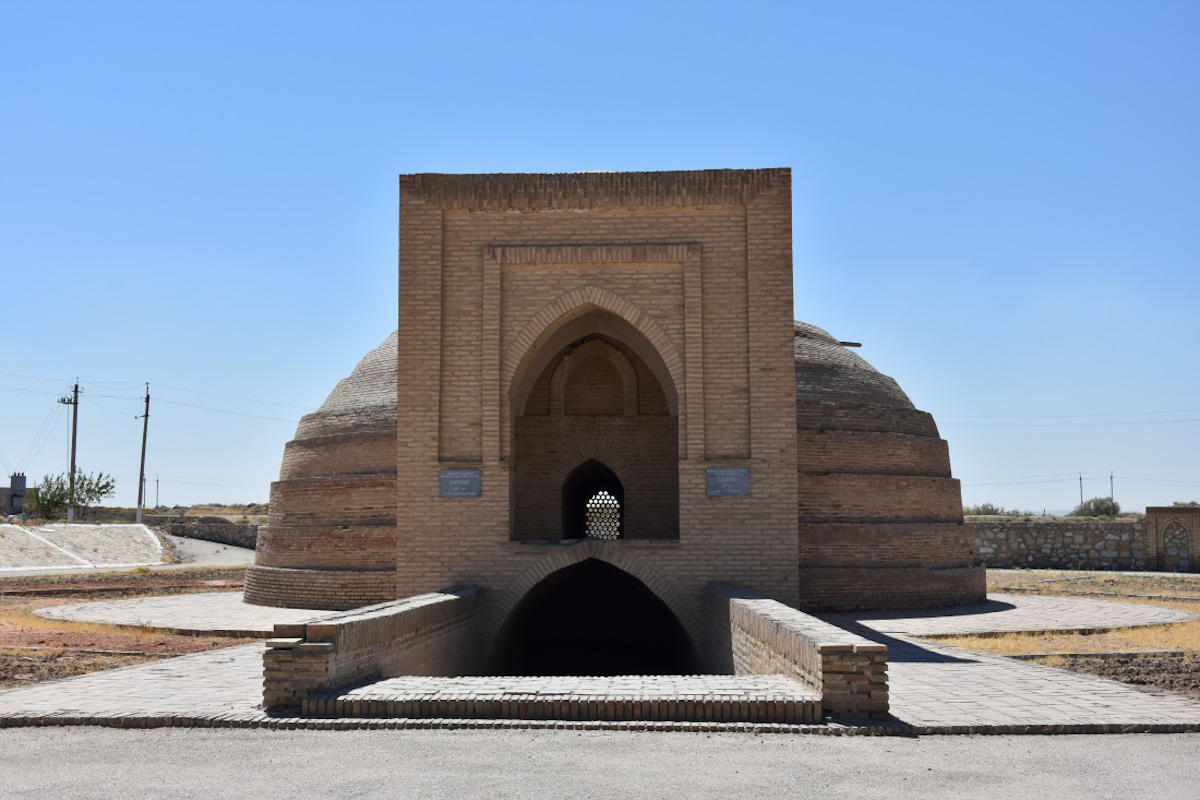Kermene - Rabat Malik Caravanserai
The Rabat Malik (Royal Rabat) caravanserai in Kermene is one of the largest architectural structures located far from the Great Silk Road connecting the Middle East with China. The Rabats played a special role in the military and spiritual development of Central Asia as stations for mounted guards in border areas and as fortresses for the Gaziy, the fighters for Islam.
With the rise of Islam, however, the importance of the rakats in the military sense gradually evaporated, and the forts were used as inns and caravanserais or converted into religious houses for religious followers, khanakas.

From this point of view, the Rabat Malik caravanserai is a religious heritage site. It is located in the steppe between the two oldest cities in Central Asia – Bukhara and Samarkand, 18-20 km from the city of Kermene.
There are several legends about the origin of Rabat Malik that still exist among the locals. According to one of them, Rabat Malik was built by Malikkhan, the leader of one of the tribes, on the orders of Allah while he was sleeping.
Malik-khan, according to another legend, was a robber who preyed on the surrounding area and was said to have been a threat to the area. According to one legend, one of the passing natives, Malik Khan – the builder of the slaughterhouse, appears as a victim: he was blinded by Genghis Khan for disobedience during the Mongol invasion.
The area where the Rabat Malik caravanserai is located is called Chul-i Malik (Royal Steppe). Until the last century, the settlement of Malik was located in the vicinity. In the meantime, Rabat Malik has been almost completely lost.
Only a lonely portal rises in the flat steppe. Even the name of the monument, which the local population calls Bukhara Gate, has changed. It took a little more than a century for the ruins of the monumental, majestic structure with a richly decorated façade, built on the steppe in the 1940s, to be almost completely destroyed.
The first travel notes, descriptions and sketches from the last century show that Rabat Malik was actually already destroyed at that time, but was preserved in a more holistic form compared to the present day.
The sketch by A. Lemon, who was there in 1841-1842, contains valuable information. The drawing captures the most spectacular part of the monument – the main façade with a portal in the centre and the gulda towers in the corners, which were still intact at that time.
Now, apart from the Rabat Malik portal, nothing remains. But in the attestation of A.Lemon, published by I.I.Umnyakov (I.I.Umnyakov, 1927, p.181) and almost simultaneously by B.N.Zasypkin (B.N.Zasypkin, 1928, p.214), a description of the Rabat Malik courtyard part is given which is now completely missing.
Here is the description: “Through the gate with Gothic vault of very massive construction one can enter the fortress. The fortress is a place of fallen ruins and piles of stones, and we can only guess at what they once were.
Just beyond the entrance, narrow parallel galleries, reminiscent of horse stables, extend on both sides. Then one can enter a rather large courtyard, from which a narrow corridor leads into the main room.
The latter forms a large independent circular building, with massive Gothic columns on its inner walls, which are quite well preserved and variously decorated with relief arabesques. They once supported the dome with high vaults of this rotunda, which has now collapsed and covers the floor with large and small debris.
As there were no windows in the walls, the light must have come from above. At the back of this great hall is a small door leading into the last room, from which one now enters the great orchard.”
The Rabat Malik Caravanserai is also popular because it is considered to be one of the few structures in Central Asia whose construction time is precisely determined. V. V. Bartold and later I. I. Umnyakov were certain that the information from “Kitabi Mullozade” (first half of the 16th century) and the notes in the margin of this manuscript about the construction of a royal Rabat by the Karakhanid ruler Nasr Shems al-Mulk in the year 471 AH (1078 – 1079) goes back to Rabat Malik in the steppe near Kermene.
